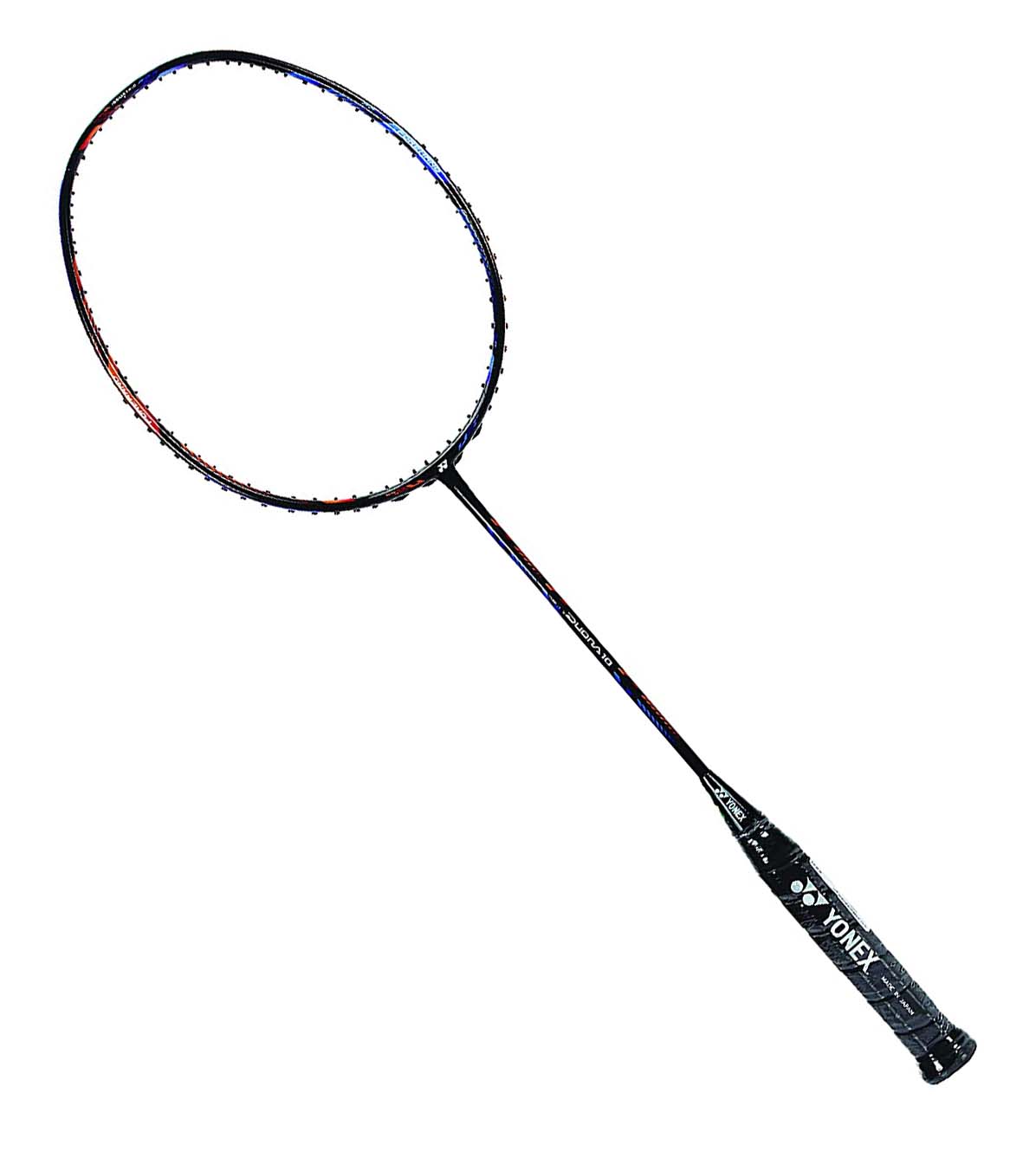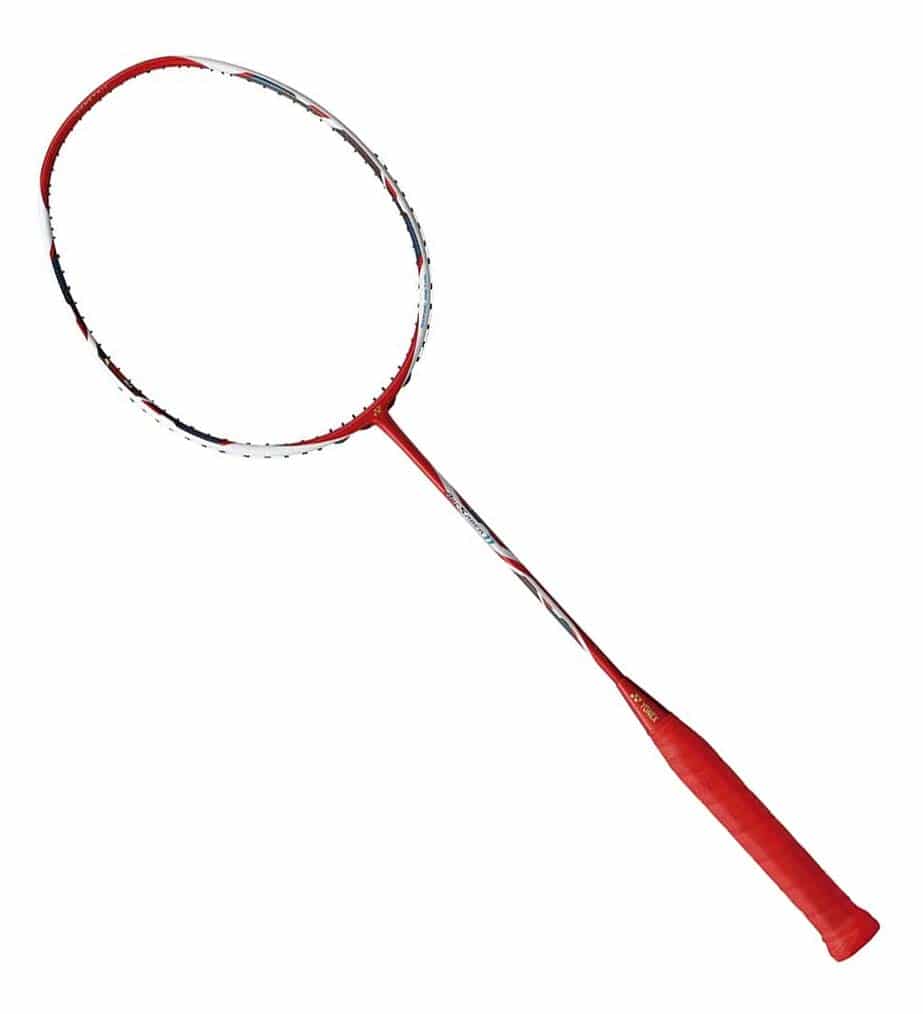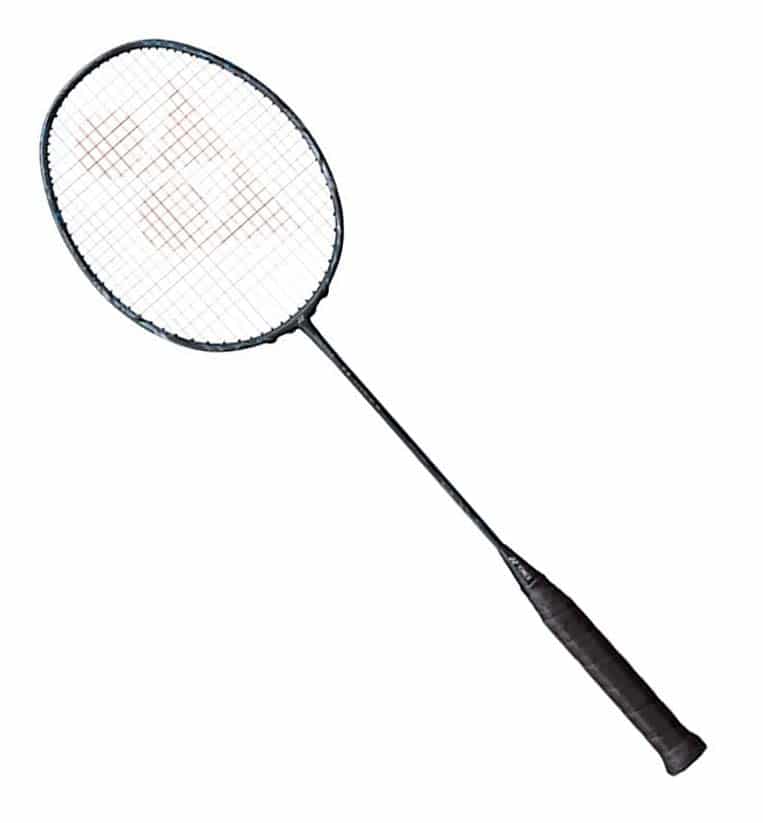A good badminton racket is required when you reach the advanced level. Badminton rackets for advanced players are the same as tennis racquets for professional players, who utilize and recommend them. These are the pinnacle of racquets, employing cutting-edge technology to enhance a player's overall abilities.
So, we have made a list of the best badminton rackets for advanced players that are recommended and used by professional players.
Which Are The Best Badminton Rackets for Advanced Player?
Among all the required equipment, a racket is the most vital while playing competitive games. So we reviewed badminton rackets that are the best of the best. Let check it out.
Yonex Duora 10 is a genuine Yonex badminton racket manufactured in Japan. This is a top-of-the-line racquet for advanced players, and it's perfect for them. Yonex Duora 10 is a premium product featuring cutting-edge Yonex technology. When it comes to duels, the dual optimization system provides players with the upper hand.
Pros:
- Made with the latest Japanese technology, it is a fantastic mix of technologies.
- Its design is aerodynamic and swift, allowing players to cut easily and rapidly in the air.
- Smashes and shoots have incredible force and precision.
Cons:
- Stay away from it if you are a complete beginner
- Price range is high
At the world's best badminton competitions, the YONEX Arcsaber 11 racket is frequently utilized. The professional players in the tournament mostly use the racket. It provides the user with strength, balance, and agility. The YONEX Arcsaber 11 is ideal for players with excellent shuttle control. It is the best badminton rackets for advanced players.
Pros
- Achieve higher-level control with badminton skills
- Perfect balance and stability
Cons:
- Not suitable of beginners
It was released in 2014, and it's called the Yonex Voltric Z Force 2 racquet. The Yonex Voltric Z Force II provides an excellent mix of power and accuracy for players of all skill levels. When you first grasp the racquet, you will feel the frame solidly in your hand. It inflicts devastating voids with controlled smashes—making it the best badminton racket for advanced and professional players.
Pros:
- Easy to use
- Elegant design
Cons:
- Price range is high
Best badminton rackets for advanced and professional players - Buying guide
Badminton rackets, especially today, are pretty complex and use different technologies. But on the whole, they only differ in a few key points which have their advantages and disadvantages.
These key points are the major characteristics that change the profile of the racket and determine for what type of players it will be addressed: beginner, intermediate, advanced, expert; but also for what type of game: attacker, defender, or all-rounder. Here we will go through all these points in detail to determine which is the best badminton rackets for advanced and professional players.
Materials
The three materials that we find in the manufacture of a racket are:
Aluminum
This is the primary material found on low-end beginner rackets. Inexpensive, it offers incomparable resistance. The main drawback is its weight. An aluminum racket is often very heavy. For this reason, we do not recommend it, even for beginners.
Fiberglass
There are not many fiberglass racquets. However, this material offers undeniable qualities. It is very resistant and offers a pleasant feel to the wheel in addition to being very light. We recommend purchasing a racquet in this material which will be much better than an aluminum racquet.
Carbon
Carbon fiber has similar qualities to fiberglass but is better. Aside from its more rigid feel, carbon will be even more potent than fiberglass. Its main drawback is its price, although today, there are relatively affordable carbon fiber composite racquets. It is a material that we recommend because of its lightness.
What is the difference between single and double?
We assume that you are aware of these differences, but we prefer to remind you of them nonetheless and the type of play that these two ways of playing engender because they justify the choice of a racket. When buying a new racquet, we will often ask the person his playing profile (we will see that shortly after) and if he intends to play in doubles, singles, or both.
Badminton can be played in singles. We will then be two players on the field playing opposite each other. It can also be played in doubles, where we will play with a partner against two other players. Singles do not have the same playing configuration at all and may require different rackets.
To keep it simple and avoid getting lost in too complex explanations, we will summarize it as follows: for the single, the exchanges are slower, we have more time than with the double, so we can opt for a heavier racket even if it takes longer to lift.
It will also have the advantage of providing more power during smashes. If you are a competitor, it is essential to understand this well. If you are not, do not bother with these details; take a light racket (not necessarily the lightest), and it will be fine. If you are doing doubles and singles, this is where technology can help.
What are the differences between badminton rackets?
The differences between all racquets will be in 3 essential points: the stiffness of the handle (called the shaft), the weight distribution, and the racquet's weight. We could also add other points, such as the size of the shaft, but this is data that few use, although it is essential. So let's see that in detail.
The rigidity of the handle of the grip is divided in 3 ways according to its degree of rigidity - A racket can be:
Rigid (even very rigid)
The tough racket is intended for experienced players who will seek more nervousness in this rigidity. The shuttlecock will be returned more quickly because the racket will bend less. So it will be perfect for quick smashes and offensive play. Using this type of racket as a beginner increases the risk of injury. They are therefore not recommended at all.
Semi-rigid
The semi-rigid racquet is a compromise between a flexible racquet and a rigid racquet. More versatile, it combines power and speed. A greater twist of the shaft provides the power compared to a stiffer racquet. Meanwhile, the speed will be provided by a faster return of the shaft to its original position than a flexible racquet. They are also more intended for experienced players and are classified as offensive rackets.
Soft
The flexible racquet is often the type of racquet we recommend for beginners, and for a good reason: its shaft twists much more quickly than other types of racquets. The soft racquet will compensate for the lack of power you will have at the start (which is normal), and the shuttlecock will be sent back further but will go slower.
Note: power is often confused with speed; the power will allow you to send the flywheel far; the speed will allow you to send it quickly. Take the example of a catapult: if we want to send a projectile far, we will twist the catapult as much as possible.
Thus, the projectile will go very far but will take a long time to start because of the duration of the twisting process. If we want to retaliate more quickly, we will have to reduce the torsion process, save us time but send the projectile less far.
So we can see here that the twist plays a role in the power and the speed: the more the racket twists, the more powerful it is but, the less it will be fast. The less it twists, the faster you can retaliate, but the flywheel will go less far because you won't be able to take advantage of as much twist to gain power.
Weight Distribution of Badminton Racket
The weight distribution is divided into 3 ways depending on where this distribution is located - The weight distribution can be:
Head heavy
The head-heavy racket is sought after by experienced players. It will accentuate the power of a rigid and semi-rigid racquet as the racquet's head will return to the initial position very quickly. It offers a good feel and more control.
The main disadvantage is that the racquet head will be harder to lift. This makes sense because if you had a weight hanging on the racket and the goal was, just by turning your wrist, without moving your arm, to lift it up and down, you would have more difficulty with the racket. Weight at the end is less complicated as you bring the weight closer to the shaft (towards you).
Finally, they are also more complicated to play because they will require more wrist force to catch up with a shuttlecock late, which happens more often to beginners. It will also be more demanding and will not forgive the off-center (when the flywheel comes out of the central area of the screen, called the central area or sweet spot).
What is desired with a racquet in the lead will be, above all, a greater power due to the return of the head accelerated with a more pronounced catapult effect.
Neutral (middle)
A neutral racket is said to be balanced. Indeed, its weight is right in the middle and does not tilt to one side or the other, well in theory, even if it is not so precise. Neutral rackets are increasingly sought after as new technologies attempt to remove the disadvantages of a profile to make it more versatile and more attractive.
This type of racquet is easier to handle and will be comfortable in defense and attack. This is what makes neutral racquets so valuable.
Handle Heavy
Rarer, the choice of a racket in the handle is a bias. Although very maneuverable, they will do much less well from the baseline, which is why they are not in great demand. However, for a player who likes to play at the net, a racket in the handle will be very pleasant and even rather formidable due to its more excellent maneuverability.
Weight Variation of Badminton racket
3 U
A 3 U racquet is a racquet that weighs approximately 85 to 89 g. It is a racket that is said to be simple. Its weight often makes rackets with a demanding profile inaccessible to the most significant number. But for those who can overcome them, they can be devastating. The pros use 3 U rackets even in doubles because their technical background allows them to fill the shortcomings that these rackets can have for the doubles.
4 U
A 4 U racket is a racket that weighs between 80 to 85 g. It is a racquet that is more intended for doubles. However, it is still quite versatile and is used for singles and doubles by many players. Its lighter weight gives access to very demanding racquets to a more significant number of players.
5 or even 6 U and more
Rackets 5 U and above are rackets weighing between 70 and 80 g. These are two rackets. They are lively and allow a quick play but generally lack power, which does not intend for the simple one. They are often popular with beginners looking for an easy-to-play racquet that offers greater ease in fast play.
Best Badminton Racket For Advanced Players - FAQ
Q1 - How much tension should your badminton racket be?
It is generally said that there are no hard and fast rules for the proper racket tension to start with. But all the same, there are similar tensions for beginners. It is especially once we are no longer that it can vary a lot.
The tension for beginners will range from 9 to 10.5 kilos. We do not recommend going up anymore. You can start at 9kg and see if that works for you or not. If you notice that it is not enough, then increase the tension. The increase in tension is generally done in steps of 0.5 kg.
Be aware that you cannot retain your racquet. To change the tension, you will either have to redo the string or wait for it to break, and this can be quite long, sometimes several months. So when you go to have your racquet strung or recorded, ask the seller for advice, who will be able to advise you according to your practice and your preferences.
The more your rope is taut and the less power you will have (the flywheel can more easily enter the sieve, therefore less repulsion or catapult effect), but the more speed, nervousness, and control you will also have.
Q2 - How to string your racquet?
There are stringing machines (which are very expensive, by the way). But this requires a good mastery of the subject, and you have to be sure of yourself before embarking on this purchase. This is not infeasible; many players take the plunge because buying a stringing machine has its good sides. However, it is better to be well informed before this type of purchase.
Q3 - Which brand of badminton racket to choose?
There are dozens of badminton brands, but the top 3 are:
Wilson
The brand has been mainly used by Brice Leverdez, French number 1, for a long time and has reached the world's top 19 singles.
Yonex
We will not list all the professional players who use a racquet of this brand because it would be too long since it should correspond to roughly 70% of them. This brand is a safe bet, and you will find it everywhere on the grounds with rackets ranging from entry-level, mid-range, to very high-end: rackets that can exceed 200 €.
Babolat
Although the brand is best known for tennis, it is often found on badminton courts like Wilson. She is greatly appreciated. But it is less often found in the professional environment than a Yonex.



Leave a Reply